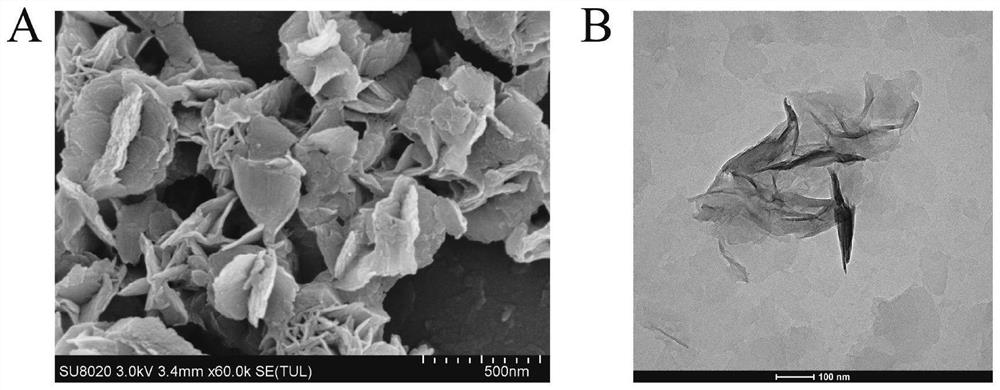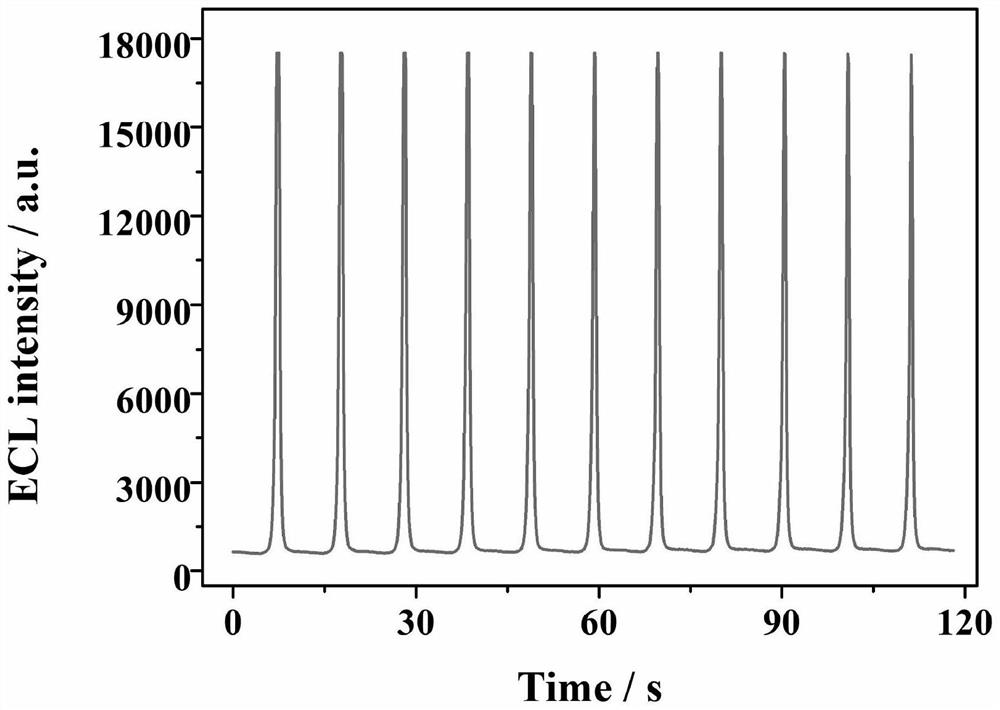Electrochemiluminescence sensor for detecting hepatitis B virus DNA and preparation and application thereof
A hepatitis B virus, electrochemical technology, applied in the biological field, can solve the problems of limited sensitivity, limited application, unfavorable early diagnosis and treatment of HBV, etc., and achieve the effect of improving sensitivity, good reproducibility, and excellent ECL performance
- Summary
- Abstract
- Description
- Claims
- Application Information
AI Technical Summary
Problems solved by technology
Method used
Image
Examples
Embodiment 1
[0068] Preparation of Electrochemiluminescence Sensor and Detection of HBV DNA
[0069] 1. Materials
[0070] Tetrakis[4-(4'-carboxyphenyl)phenyl]ethylene (H 4 ETTC) was purchased from Beijing Huaruike Chemical Co., Ltd.; zirconium chloride (ZrCl 4 ), N, N dimethylformamide (DMF), formic acid (HCOOH) and triethylamine (TEA) were provided by Aladdin Biochemical Technology Co., Ltd.; HPLC purified oligonucleotides were synthesized by Shanghai Sangong; EnGen Lba Cas12a and NEBuffer 3.0 solution were purchased from New England Biolabs; DNA Marker, enzyme-free water and RNase inhibitor were purchased from Dalian Takara Company.
[0071] 2. Testing instruments
[0072] Xi'an Remax MPI-E electrochemical luminescence workstation, the detection system is a three-electrode system, including the reference electrode is Ag / AgCl electrode, the counter electrode is platinum wire electrode, and the working electrode is a glassy carbon electrode with a diameter of 4mm.
[0073] 3. Detectio...
Embodiment 2
[0098] Characterization of Zr-ETTC
[0099] 1. SEM and TEM characterization
[0100] Such as figure 2 As shown, Zr-ETTC presents a wrinkled-like ultrathin nanosheet morphology with a large specific surface area, which facilitates the loading of biomolecules.
[0101] 2. ECL signal characterization
[0102] Such as image 3 As shown, Zr-ETTC has an excellent ECL signal in the presence of co-reactant triethylamine (TEA). This is attributed to the following reasons: On the one hand, the rigid MOF framework can confine the H 4 The free intramolecular motion of ETTC and reduced nonradiative relaxation enable strong ECL emission. At the same time, due to the use of H 4 ETTC acts as a bridging ligand, making the emitter H 4 ETTC can be massively immobilized in the MOF framework, further enhancing the ECL emission. On the other hand, due to the ultrathin porous structure of Zr-ETTC, co-reactants can be enriched in the micropores, thus shortening the co-reactant TEA and H 4 T...
Embodiment 3
[0104] Crosslinking Characterization of Zr-ETTC and Fc-SP
[0105] 1. Zeta potential characterization
[0106] In order to demonstrate the successful combination of Zr-ETTC and Fc-SP, the Zeta potential measurement was carried out on the nanomaterials before and after crosslinking in this example. Such as Figure 4 As shown in A, after binding to Fc-SP, because Fc-SP is negatively charged, the Zeta potential shifts from +3.05mV to -11.01mV, which shows that Zr-ETTC@Fc-SP was successfully prepared.
[0107] 2. ECL signal characterization
[0108] Such as Figure 4 As shown in B, under the same experimental conditions, Zr-ETTC first exhibited a very strong ECL signal, but when Fc was added, the ECL signal decreased significantly, indicating that Fc could indeed quench the ECL signal of Zr-ETTC.
PUM
| Property | Measurement | Unit |
|---|---|---|
| Diameter | aaaaa | aaaaa |
Abstract
Description
Claims
Application Information
 Login to View More
Login to View More - R&D
- Intellectual Property
- Life Sciences
- Materials
- Tech Scout
- Unparalleled Data Quality
- Higher Quality Content
- 60% Fewer Hallucinations
Browse by: Latest US Patents, China's latest patents, Technical Efficacy Thesaurus, Application Domain, Technology Topic, Popular Technical Reports.
© 2025 PatSnap. All rights reserved.Legal|Privacy policy|Modern Slavery Act Transparency Statement|Sitemap|About US| Contact US: help@patsnap.com



